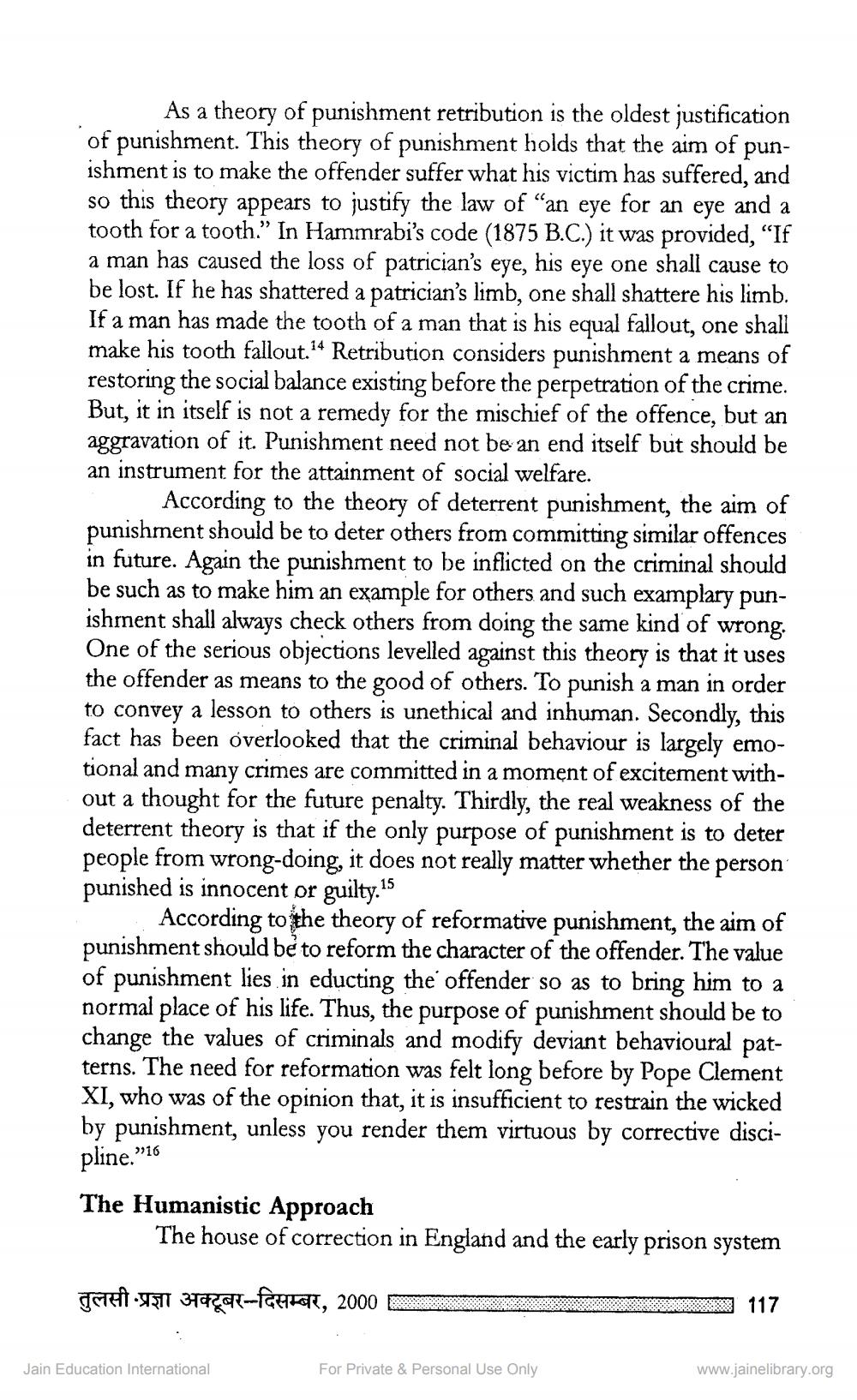________________
As a theory of punishment retribution is the oldest justification of punishment. This theory of punishment holds that the aim of punishment is to make the offender suffer what his victim has suffered, and so this theory appears to justify the law of "an eye for an eye and a tooth for a tooth.” In Hammrabi's code (1875 B.C.) it was provided, “If a man has caused the loss of patrician's eye, his eye one shall cause to be lost. If he has shattered a patrician's limb, one shall shattere his limb. If a man has made the tooth of a man that is his equal fallout, one shali make his tooth fallout.24 Retribution considers punishment a means of restoring the social balance existing before the perpetration of the crime. But, it in itself is not a remedy for the mischief of the offence, but an aggravation of it. Punishment need not be an end itself but should be an instrument for the attainment of social welfare.
According to the theory of deterrent punishment, the aim of punishment should be to deter others from committing similar offences in future. Again the punishment to be inflicted on the criminal should be such as to make him an example for others and such examplary punishment shall always check others from doing the same kind of wrong. One of the serious objections levelled against this theory is that it uses the offender as means to the good of others. To punish a man in order to convey a lesson to others is unethical and inhuman. Secondly, this fact has been overlooked that the criminal behaviour is largely emotional and many crimes are committed in a moment of excitement without a thought for the future penalty. Thirdly, the real weakness of the deterrent theory is that if the only purpose of punishment is to deter people from wrong-doing, it does not really matter whether the person punished is innocent or guilty. 15
According to the theory of reformative punishment, the aim of punishment should be to reform the character of the offender. The value of punishment lies in educting the offender so as to bring him to a normal place of his life. Thus, the purpose of punishment should be to change the values of criminals and modify deviant behavioural patterns. The need for reformation was felt long before by Pope Clement XI, who was of the opinion that, it is insufficient to restrain the wicked by punishment, unless you render them virtuous by corrective disci
pline."16
The Humanistic Approach
The house of correction in England and the early prison system
Toten
Tacck--faatka, 2000
117
Jain Education International
For Private & Personal Use Only
www.jainelibrary.org




